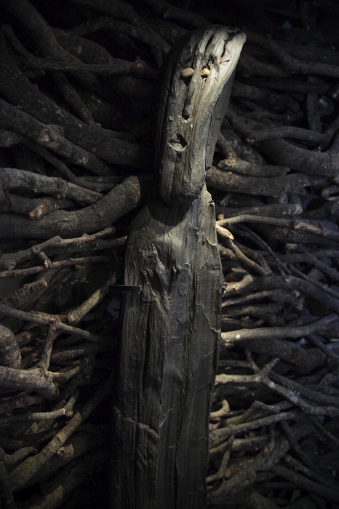Mystery of the Ballachulish Goddess
The sea loch of Loch Leven (Scottish Gaelic: Loch Liobhann) is located on the west coast of Scotland. It extends for nearly nine miles and at its western end flows into Camus a' Chois, part of Loch Linnhe at North Ballachulish. Loch Linnhe is a beautiful part of Scotland, known for its fantastic scenery and sunsets. The area has a rich history with a number of Bronze Age burial sites in the vicinity. These archaeological sites point to this as a place of ritual importance that was used for special ceremonial purposes in the third and second millennia BC.
This view seems to be confirmed by the mysterious carved figure of what was to become known as the Ballachulish Goddess. Discovered in 1880 beneath the peat it has been dated to the Late Bronze Age, 725 - 500 BC and is the oldest human figure in Scotland. Now in the possession of the National Museums of Scotland, when found a basket of woven twigs surrounded her. The wooden figure has quartzite pebbles for eyes and when discovered was just under 5 feet (145 centimetres) in height.
Unfortunately the necessary care was not taken of the Ballachulish Goddess when she was originally found. On her journey to Edinburgh she sustained some damage and the wood was allowed to dry out later causing it to warp and crack. The original location on which she stood was overlooking a water crossing and it is possible that she was looked on as representing a Goddess that could offer protection to those people who paid her respect in ancient times. However, her true purpose remains a mystery that is lost in the mists of time. It would be nice to think that one day a way could be found to return her to her original location. So that she could gaze out again upon her domain and weave her magic.






